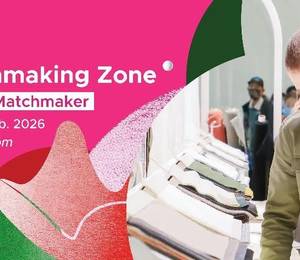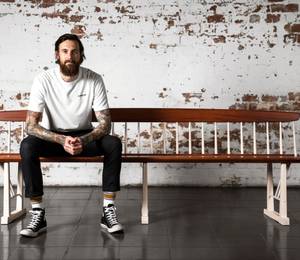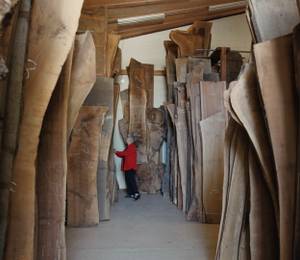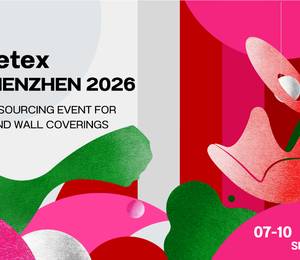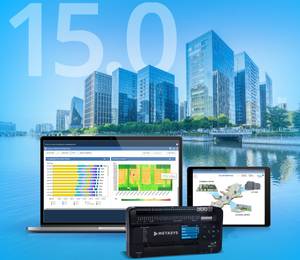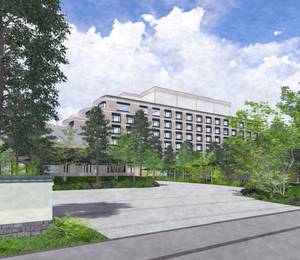The new hotel is constructed within an abandoned industrial area and was inaugurated on the occasion of the Beijing Winter Olympics in 2022. The entire complex, named Shougang Park, is around 20 kilometres from the Forbidden City and is where many of the Game’s sports venues are situated. The 5-star hotel managed by Shangri-La includes a series of interconnected structures divided between the Main Building housing the common areas and the Guestrooms Building that accommodates 282 rooms.
This integrated project by Lissoni Casal Ribeiro regards the architecture of the façades together with the design of the interiors and that of the internal and external green spaces.
Main Building
The existing structural framework of the Main Building is maintained but emptied of its interior to reveal a skeleton of clear industrial heritage consisting of concrete walls and steel roof trusses, evidencing those ravages and markings of time that have transformed it into a fascinating backdrop.
An extensive façade in glass covers the original structure, enclosing the building in a transparent skin that leaves the style of the building intact while controlling the light and temperature inside, transforming the architecture into a large and contemporary winter garden filled with greenery.
Taking full advantage of the internal height of over 20 metres, the space has been organised on two levels. The ground floor has been conceived as a large square, an area that is also open to the city, with bars and restaurants distinguished by large tables inducing conviviality. The mezzanine on the first floor is instead contained in a wood structure, a “nest” that brings a more intimate scale to the area and which houses the reception and a generous lounge area.
An enormous quantity of greenery and plants fill the spaces, almost as if nature is seeking to take possession of these once abandoned buildings, and dialogue with the architecture and the predominant materials of cement and wood. The furnishings are custom-made, integrating objects of contemporary taste with reference to local culture and tradition reinterpreted in a contemporary key. Art installations inspired also by the industrial past have been selected with the Hong Kong art consultant DEBUT STUDIO and are positioned throughout the building.
A fully glazed protruding volume nestles in the existing industrial structure and houses the wellness area with its pool and gym.
A new construction extends the Main Building and houses the events spaces. Here, the façades are clad in black ceramic bricks and it is marked out by the contrast between the large exterior wall and the narrow proportions of the vertical and horizontal openings. The technical elements, such as large ventilation pipes, are left visible and integrated as significant components of the architecture, respecting and recalling the industrial identity of the original part.
Guestrooms Building
The building that houses 282 rooms is connected to the Main Building by an elevated bridge. The design intent here was to soften the overall massing by dividing it into smaller volumes separated by vertical openings. To give balance and proportion to the structure, the façade is visually divided into three different horizontal layers: the ground floor with terraces and cantilevering canopies that detach the building from the ground giving it an air of lightness; a second and more compact layer and finally a large canopy that floats above the roof, sheltering it from direct sunlight and concealing the MEP areas.
The façade is composed of bricks and natural materials that need very little maintenance and possess optimal thermal and ventilation properties.
There are fewer industrial references here in order to ensure maximum comfort, both physical and visually, the rooms being characterized by muted tones and warm materials that draw on local tradition.
PROJECT DETAILS
Design Team:
Piero Lissoni with
Architecture: Miguel Casal Ribeiro, Ricardo Hernandez, Mattia Susani, Francesco De Matteis
Landscape: David Pouliot
Interior Design: Tania Zaneboni, Ilia D’Emilio (FF&E selection), Sara Cerboneschi, Marco Gottardi, Tianzhou Chen, Iacopo Taddeo, Roberto Berticelli, Rodrigo Tellez, Patrizia Manconi
Render: Alessandro Massi Mauri, Alberto Massi Mauri, Alessandro Grasso
Graphic Design: Samuele Savio, Laura Cucchi, Mario Rizzotti, Santiago Villa
Styling: vandersande.studio
